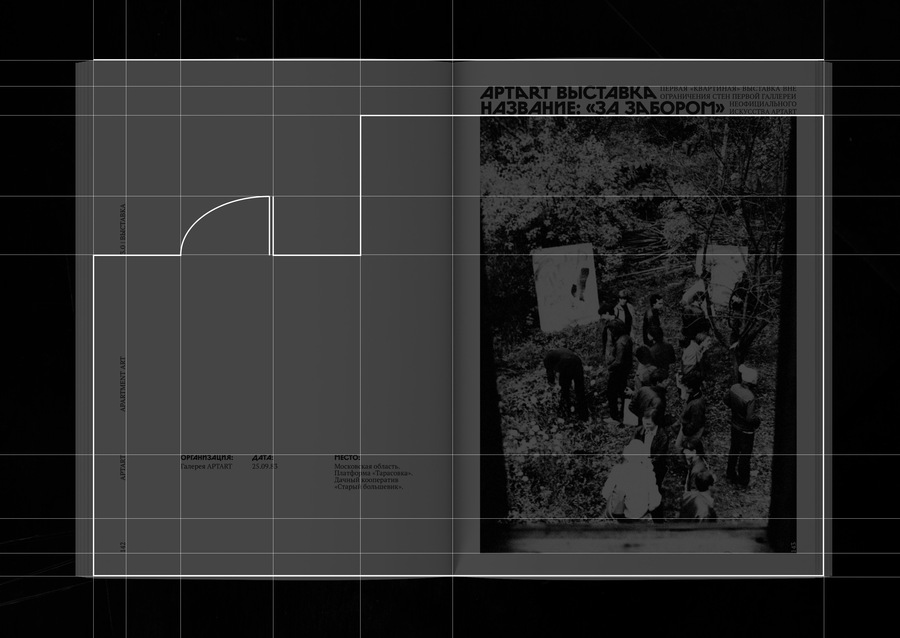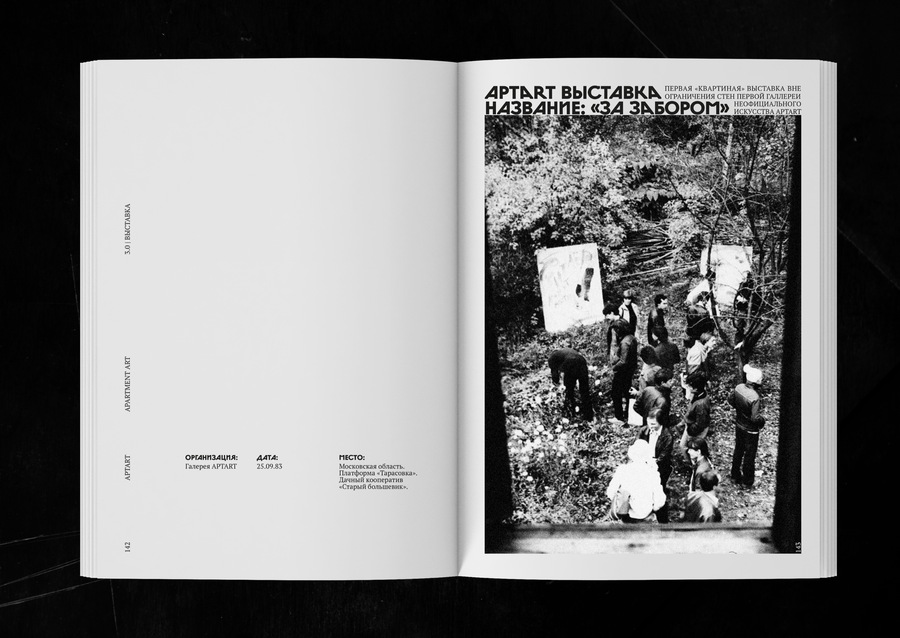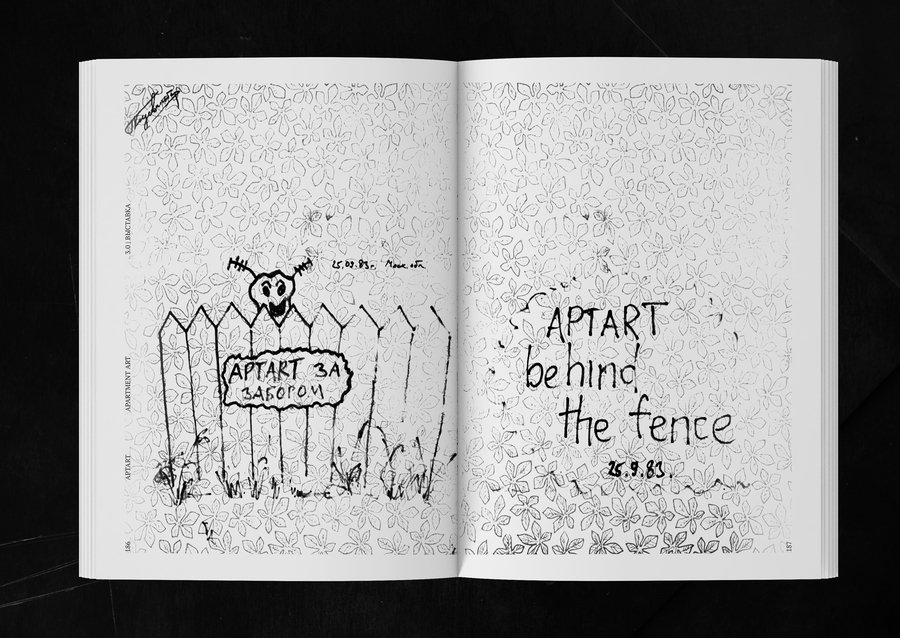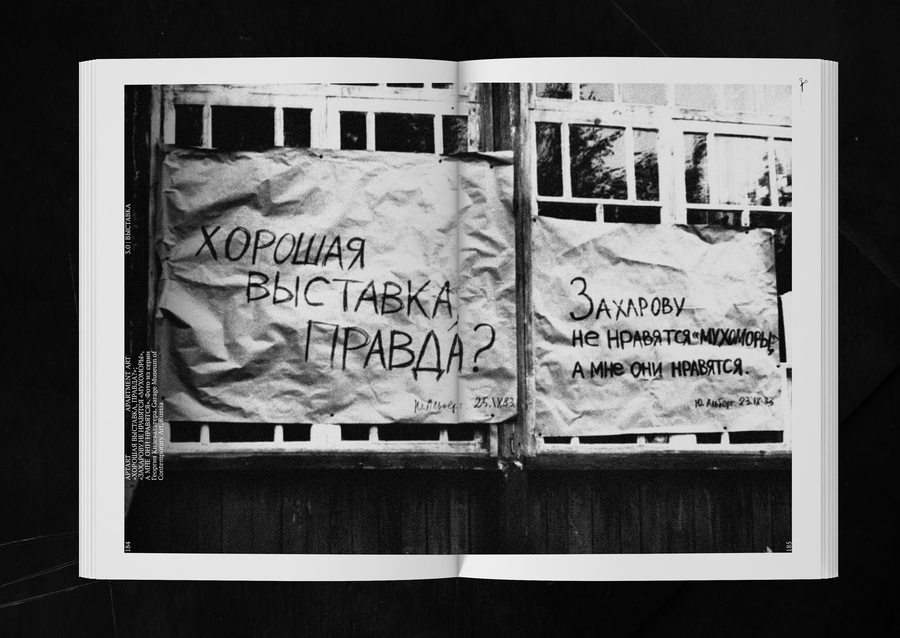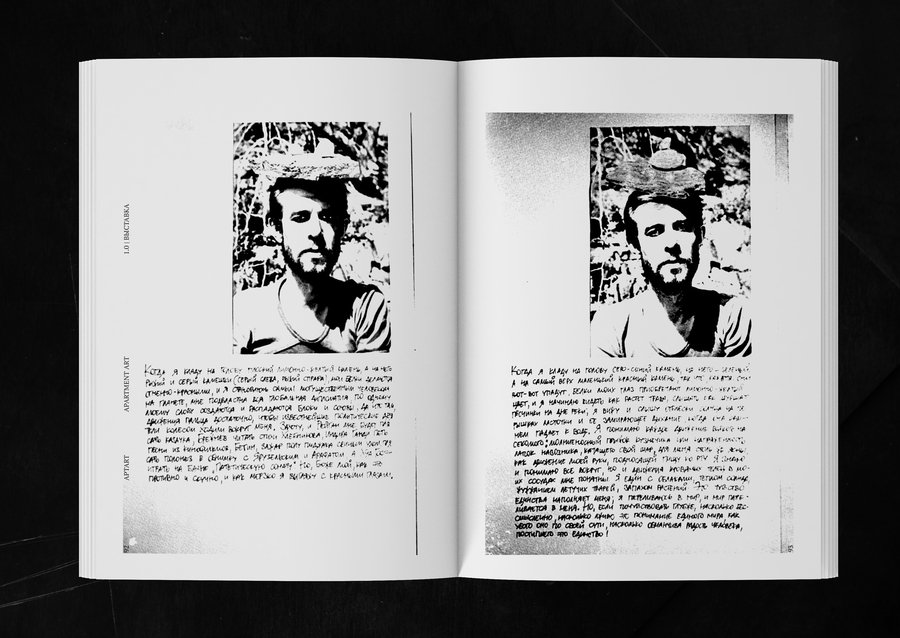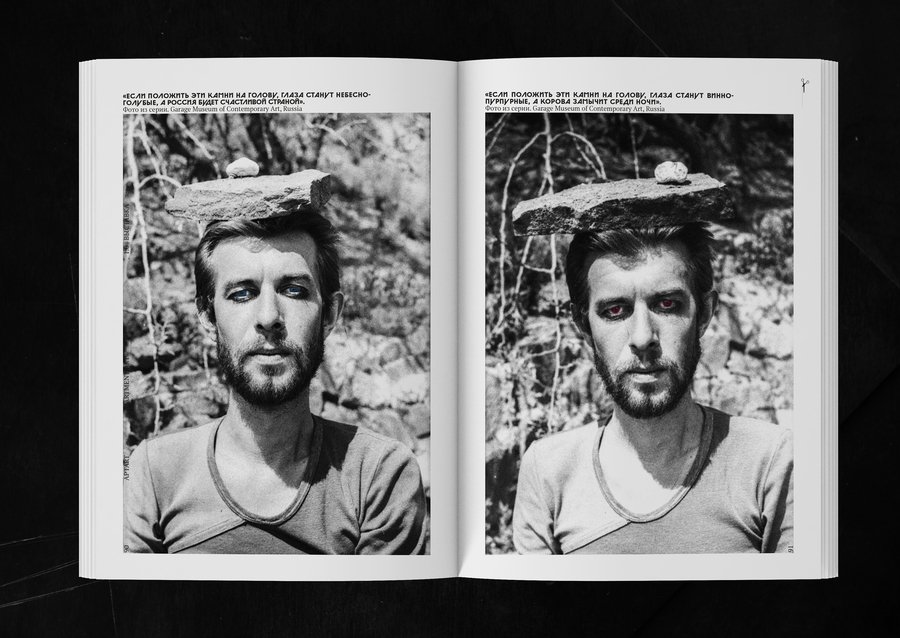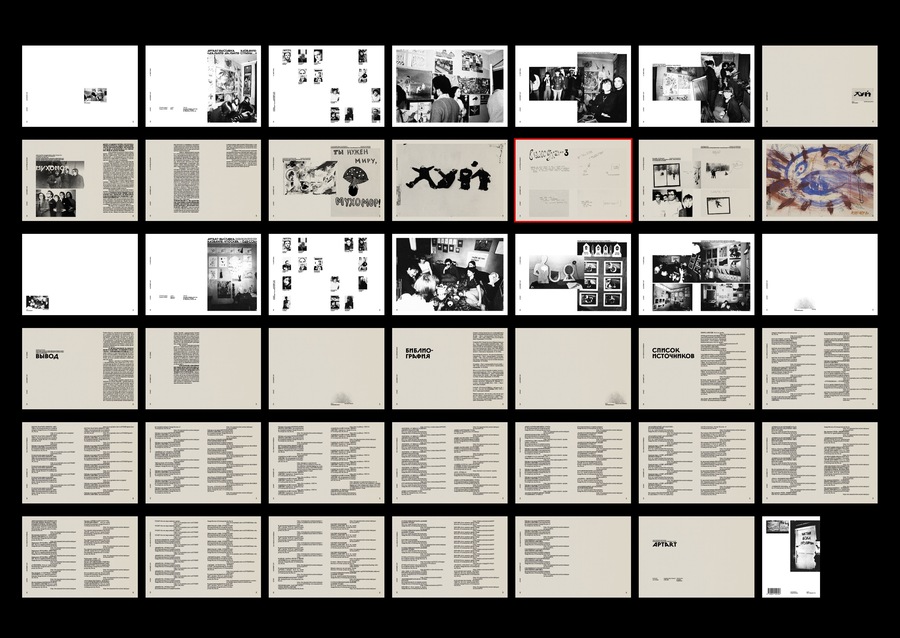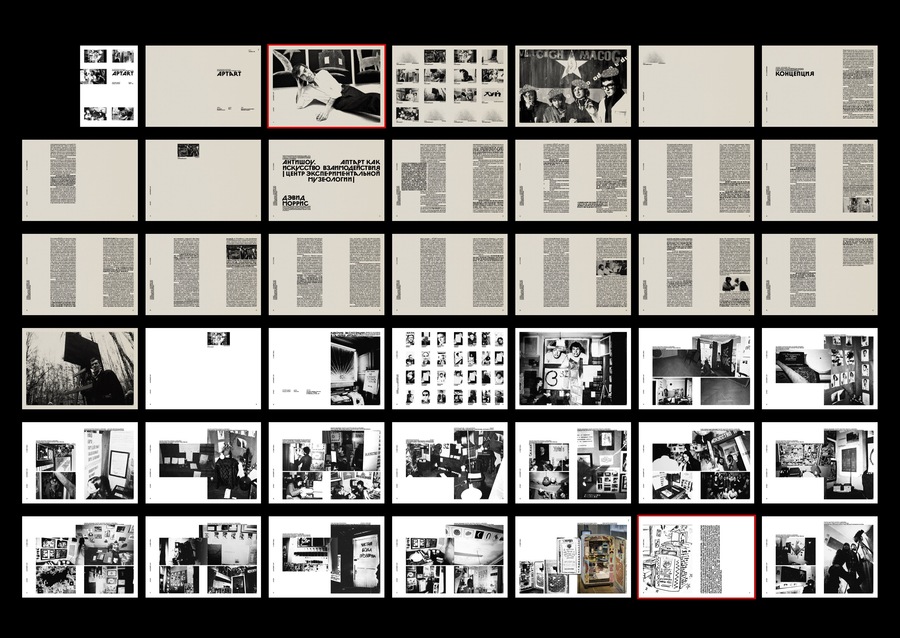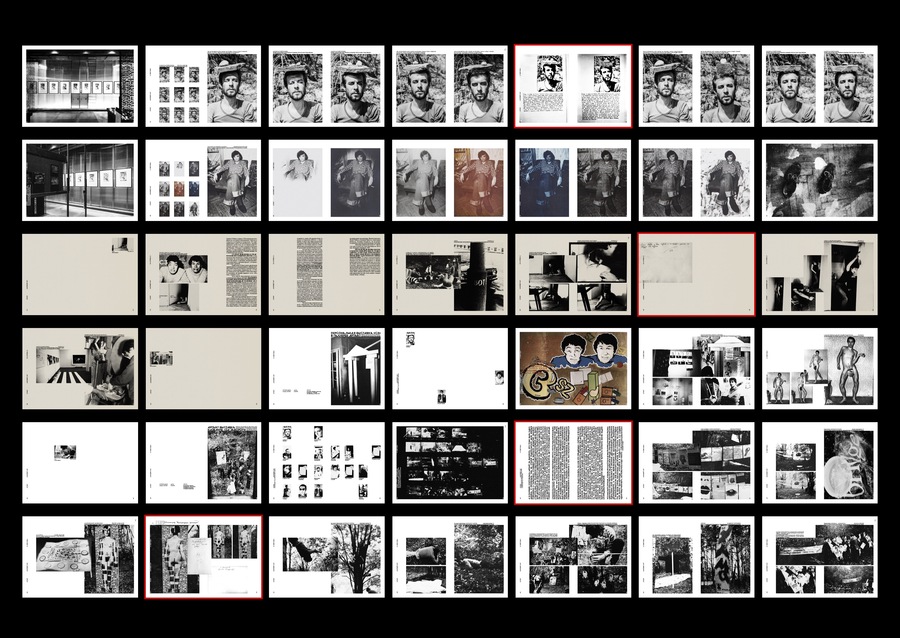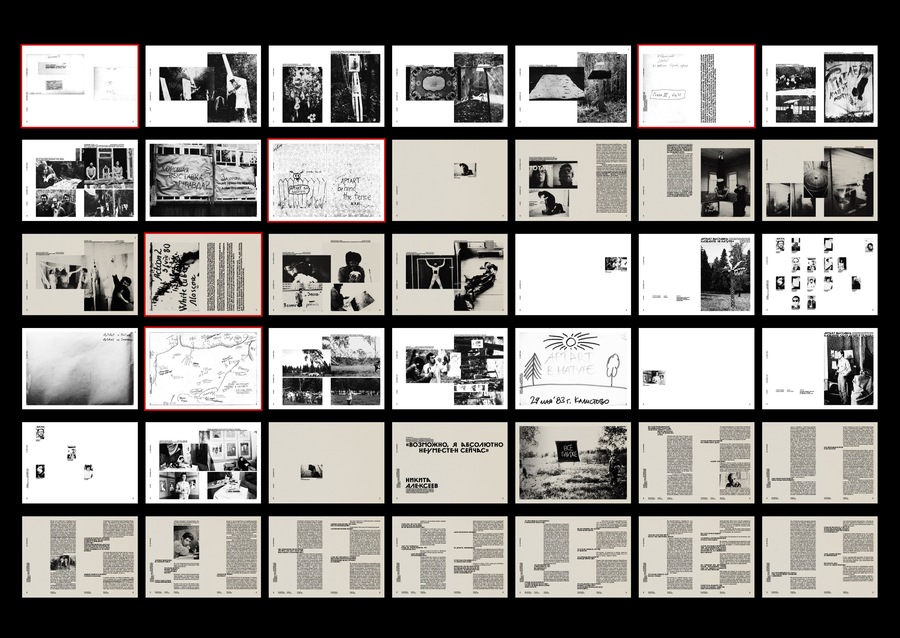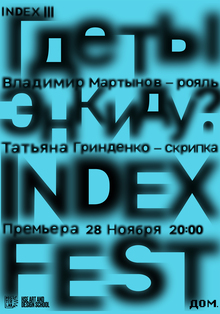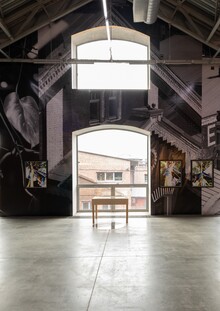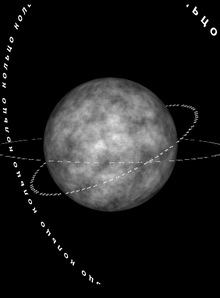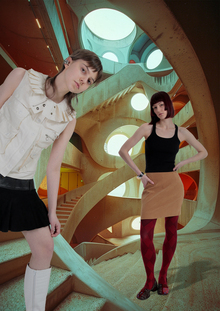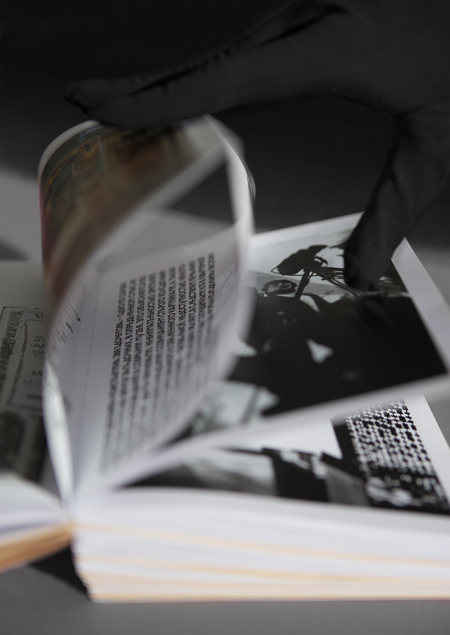
APTART 1982 — 84
APTART-Apartment Art. Visual study on informal Soviet apartment art, followed by the first private art gallery of the USSR.
Apt-art is a term invented by artist Nikita Alexeev for a home exhibition. ==History==The art is derived from the word «ART» and «ART».
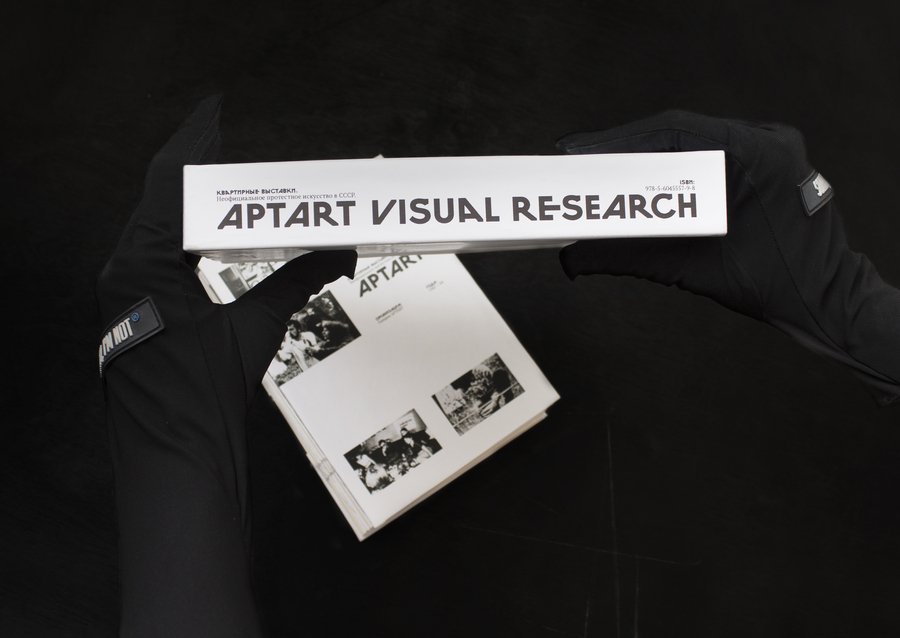
The visual study asks: «How have the apartment exhibitions and their organization changed?» The APTARTa exhibitions are considered for the answer, as the organization has set up a cult of protest art and brought together most artists.
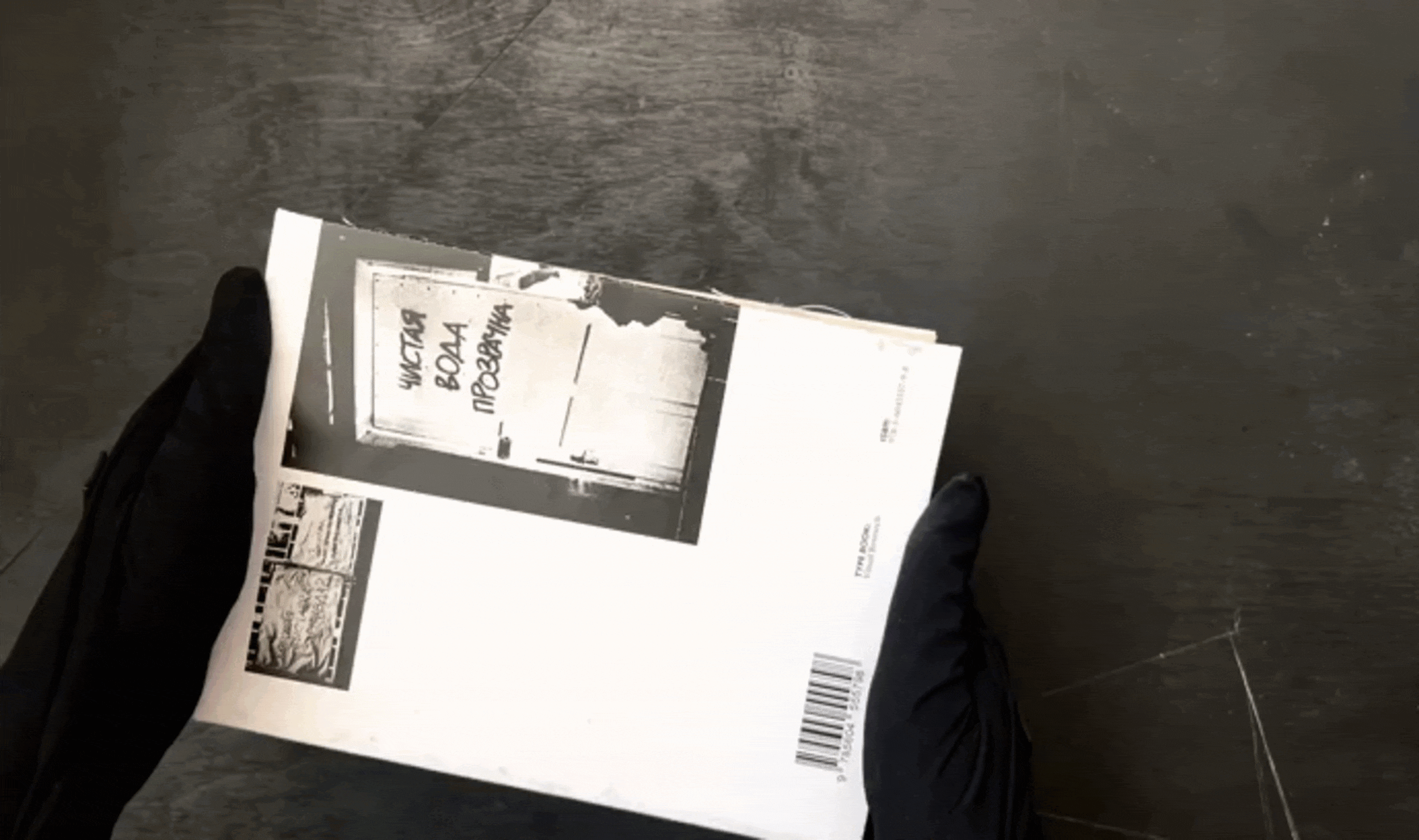
It’s a format. 190×270. The basis is the USSR format 11 / model a4 /, but with a reduction to implement the binding of hidden pages.
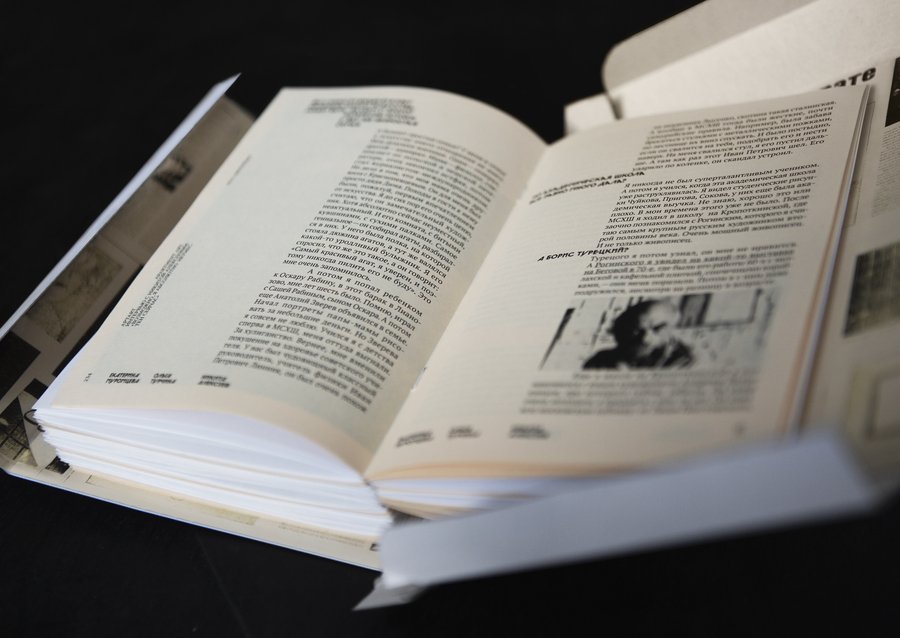
Fonts. UGLYGOTIC. Accede, reflecting the USSR’s stylistics and weirdness of APTARTa. PT SERIF PRO. Well read in a small set of antiques of old style.
Metaphor. Apparently invisible, open-closed ♪ All the apartment exhibitions were informal and hidden from the KGB ♪
Grid. Nickita Alexeev’s apartment/exhaust room.
Text section (article). The footnotes and photographs fit into the main text.
Receptions. The key problem with an exhibition gallery in the form of an apartment is a lack of space and a large number of people. Based on this theme, the following are used: photo application; hidden pages; text and photo writing; narrow inter-structural interval; and the creation of a «frame».
Section on groups actively participating in exhibitions. (1/3)
Hidden pages are marked at the top corner of the sheet. They include: reverse works; rear sides of photographs with description or copyright; textual descriptions of exhibitions.
The essence of hidden pages is to give the reader a choice in the way of study (cutting/opening/missing). Art doesn’t need to be explained, the key goal is to cause emotion.
A large volume of photo has been translated into chb, but there are a number of colour photographs where the reception is contrary to the color concept. For example, in the series «CAMNI ON MY HEART», the color of the eyes plays a key role.
The navigation of the chapters is done by the consistent appearance of the photo. The same technique was used in designating artists who took part in certain exhibitions.
White pages are a section of the APTARTa exhibit. Vintage pages are text sections; sections on self-contained groups participating in APTARTa exhibitions. Red Line is a hidden page.
